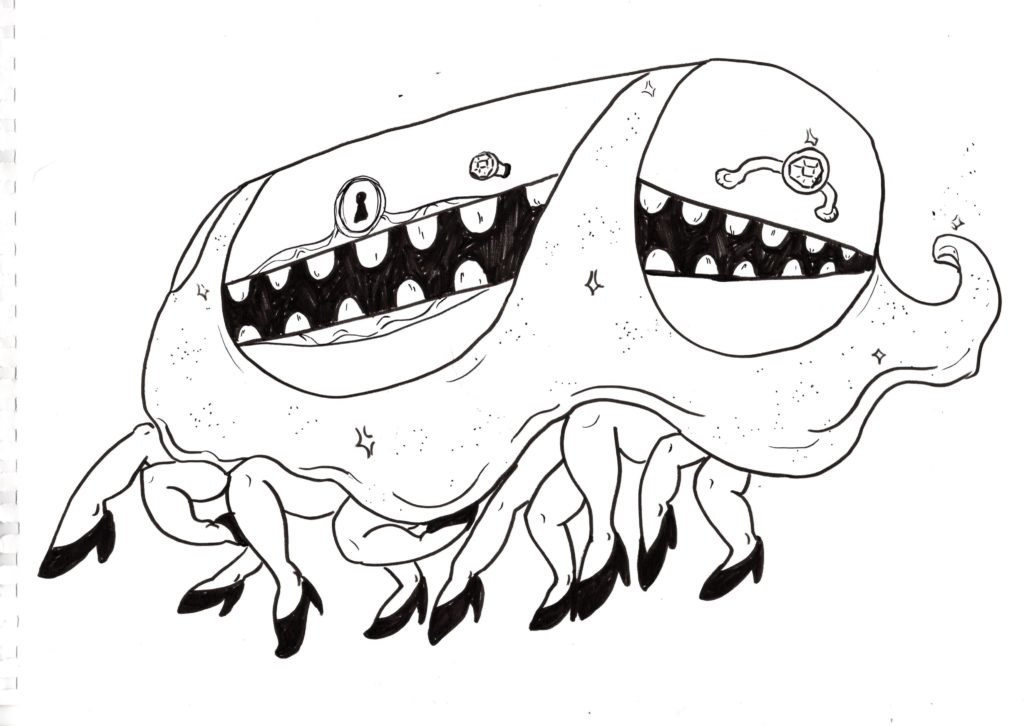#Pratchat7A – The Curious Incident of the Dragon and the Night Watch
In this, the next episode after our seventh one, writer, performer and librarian Aimee Nichols talks with us about the ninth-but-one Discworld novel, Terry Pratchett’s Guards! Guards! Published in 1989, it kicks off the longest-running and arguably most popular Discworld sequence: the adventures of the Ankh-Morpork City Watch.
The Night Watch has seen better days: the Thieves’ Guild has made them all but obsolete, and with the recent death of Herbert Gaskin, their company has dwindled to just three: career Sergeant Fred Colon, former street urchin Corporal Nobbs, and perpetually drunk Captain Samuel Vimes. They’re shaken up by new recruit Carrot – a human raised (as far as possible) by dwarfs – who not only volunteered to join, but actually tries to uphold the law. But they’ll need all the help they can get as a secret cabal of resentful men are manipulated by a charismatic leader for an incredible purpose: to bring a dragon to Ankh-Morpork…
Vimes, Colon, Nobby and Carrot all make their debuts here, as do Lady Sybil Ramkin (in her biggest role), Cut-Me-Own-Throat Dibbler, Detritus the troll and the concept of L-Space, and both the Librarian and the Patrician feature prominently. It’s also the first Discworld novel set entirely in Ankh-Morpork, though after appearances in all of the previous novels it already feels like home. Even nearly 30 years later, Guards! Guards! feels incredibly relevant and funny, but it’s also weird to go back to Sam Vimes’ beginning when he still has so much evolution and redemption ahead of him. (If you’d like to head straight to his next book, just go back in time to Pratchat#1, “Boots Theory“, when we read Men at Arms with Cal Wilson.)
We’d love to hear what you thought of Guards! Guards! – use the hashtag #Pratchat7A on social media to join the conversation! (If you use the…er…other number we’ll probably find you too.)
Podcast: Play in new window | Download (Duration: 1:58:46 — 54.4MB)
Guest Aimee Nichols is not only a librarian, but also a writer and performer. You can follow her (and by proxy, her dog Winston) on Twitter at @wordsandsequins, or check our her web site at aimee-nichols.com. You can also find Aimee’s wonderful piece about the passing of Sir Terry on Medium.
It’s time to step out of the Discworld again when we return from L-Space next month, when author Amie Kaufman will join us to talk about the first book of the Nomes: Truckers. As usual, if you want us to answer your questions on the podcast, get them in as soon as you can! Ask them via social media using the hashtag #Pratchat9.
You’ll find the full notes and errata for this episode on our web site.
Want to help us get to the end of our six(ish) year mission and read every Pratchett book – and more? You can support us with a tip, or a subscription for as little as $2 a month, and that’s cuttin’ our own throats! See our Support Us page for details.

